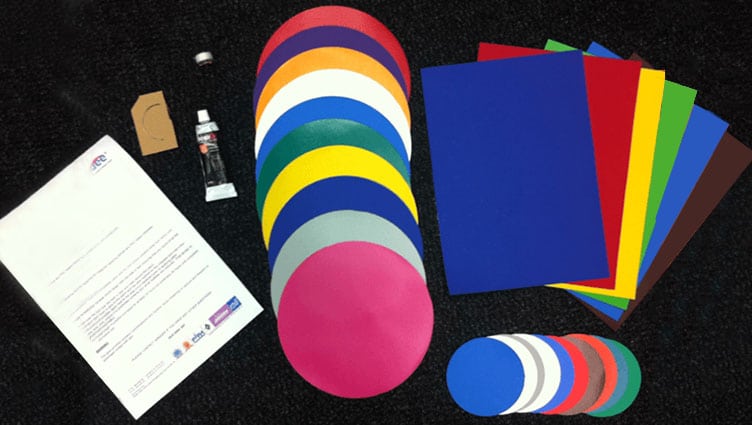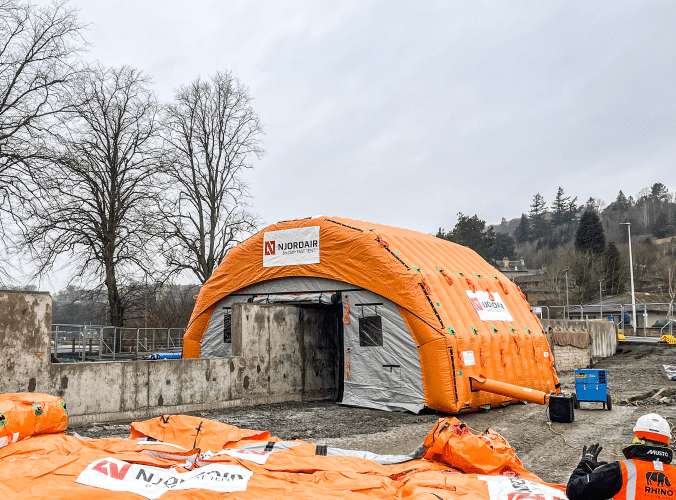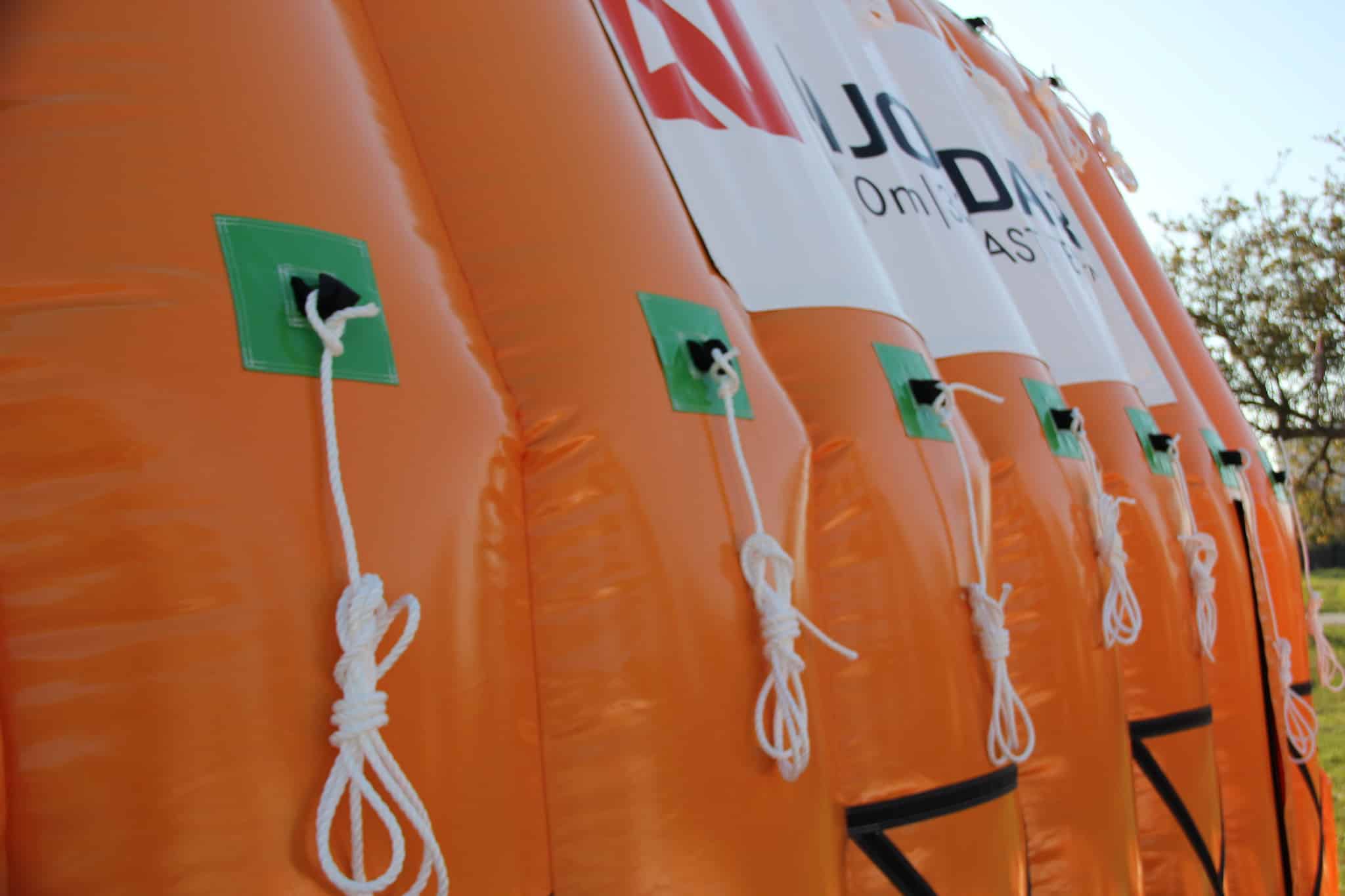Can an Inflatable Building Withstand High Wind?
The performance of inflatable buildings in high winds is influenced by various considerations.
Structural stability in Njordair inflatable buildings is attained through the utilization of internal air pressure. The inflated tubes generate tension or pre-stress, functioning as air beams or arches that provide support for a robust fabric skin. Fast Tent structures have been utilized across all climate zones globally, demonstrating their resilience in facing extreme conditions such as intense heat, cold, snow, ice, and formidable winds.
Design & Engineering
The design of the inflatable building is crucial. Proper engineering takes into account wind loads, aerodynamics, and structural integrity. Buildings designed with these factors in mind are more likely to withstand high winds. We use the most advanced technologies available in design, cutting, printing and stitching to create the most durable and reliable technical products available today.
Material Strength
The quality and strength of the materials used play a significant role. High-quality, durable materials that are resistant to tearing and stretching enhance the building’s ability to withstand wind forces.
All of our inflatable structures are manufactured from 610 or 930gsm high commercial grade PVC coated material, tested to BS3424 with flame retardancy tested to BS5438.
Our sewn inflatables are quadruple stitched with high quality German thread to ensure superior strength and robust designs to enhance the structural integrity of our products. Whilsy our sealed inflatable team are some of the most experienced and proficient in the inflatable world and utilise state of the art welding machinery.
Anchoring
Njordair inflatable buildings are supplied with high level, mid level and ground level anchor points spaced at 1 metre / 3′ intervals. Each anchor point is rated to a pull out strength of at least 150Kg / 300lbs. For soft surfaces, 1m long anchor pegs and 40cm long anchor pegs are supplied as standard. For hard surfaces, concrete blocks or water filled ISO containers are more suitable.
Ratchet straps or ropes are used to connect the tent anchor points to the pegs / ground anchors.
Inflation Pressure
Maintaining the correct internal air pressure is crucial. Overinflation or underinflation can affect the stability of the structure.
A decline in tent air pressure can result from restrictions in the air blowers or filler pipes caused by snow. When snow slides off the tent’s roof, it may accumulate around the base of the walls, covering the fan and filler pipe. This impedes the airflow, causing the tent to lose its rigidity and resistance to snow loads.
For anticipated snow accumulation exceeding 6 inches, it is recommended to employ a protective box for the fan, often referred to as a “fan doghouse.” This helps elevate the fans above the snow level, shielding them from accumulation.
Deployment
When considering wind loading you should consider what is the maximum wind speed for deploying / setting up the tent and what is the recommended wind speed that the tent can withstand.
It is recommended not to deploy Fast Tent in wind speeds above 20mph. However, once deployed and correctly anchored, Fast Tent can withstand wind speeds up to 40mph.
At wind speeds in excess of 40mph we recommend that the Fast Tent is deflated and left in situ. It can be rapidly re-inflated when wind speeds have reduced.
Summary
In summary, whilst Njordair inflatable buildings are designed to withstand relatively high wind speeds, it’s crucial to adhere to the guidelines in the operations manual regarding wind loads, proper installation, and maintenance. In extreme weather conditions, it may be advisable to take preventive measures, such as deflating the structure, if possible, to reduce wind resistance.






